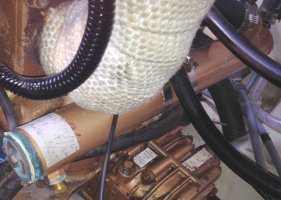Carefree Sailor
Member II
Zinc Threads
Here is information from the REALITYCHECK.ME site that may be useful. Notice the 4th bullet. I don't know if using anti-seize would cause a similar problem as using pipe tape.
Sacrificial zinc: Q: Why do you need zinc in the heat exchanger? A: Galvanic corrosion. The zincs are consumed by any electrolytic action that would otherwise corrode your heat exchanger.
Tips:
I use Permatex anti-sieze on the threads. Should be ok, but I am open to opinions.
Here is information from the REALITYCHECK.ME site that may be useful. Notice the 4th bullet. I don't know if using anti-seize would cause a similar problem as using pipe tape.
Sacrificial zinc: Q: Why do you need zinc in the heat exchanger? A: Galvanic corrosion. The zincs are consumed by any electrolytic action that would otherwise corrode your heat exchanger.
Tips:
- Don't wait too long to change or you may end up with zinc chunks in your heat exchanger. If there's nothing on the end of the plug when you remove it, it's been way too long!
- Everyone's zinc change schedule is different, check once a month until you figure out how often yours needs to be changed.
- Replace when about half gone.
- Don't even THINK about putting pipe tape on the end plug threads. The zinc cap pipe threads have to come in contact with the heat exchanger fitting or your zinc is useless.
- Make sure there's rubber gasket material between your heat exchanger and the bracket it sits on to isolate the HX from the engine.
- I read about using a ziplock baggie to catch all the water and the zinc on a forum, that works great. Still use a bunch of shop towels, just in case...
- If you have a replacement end cap you can get just the replacement pencil zinc to screw it into the end cap and save $$.


